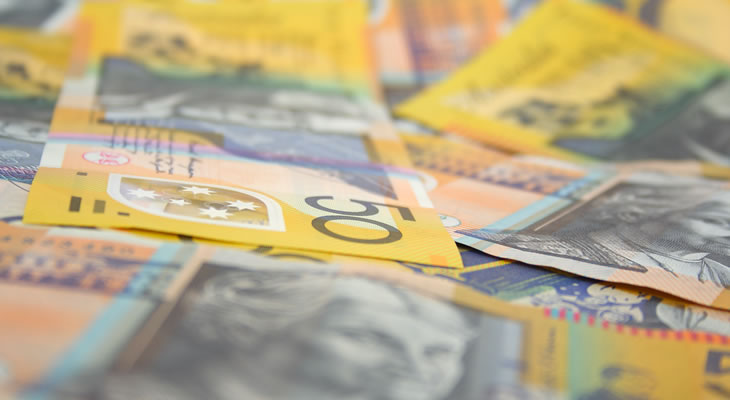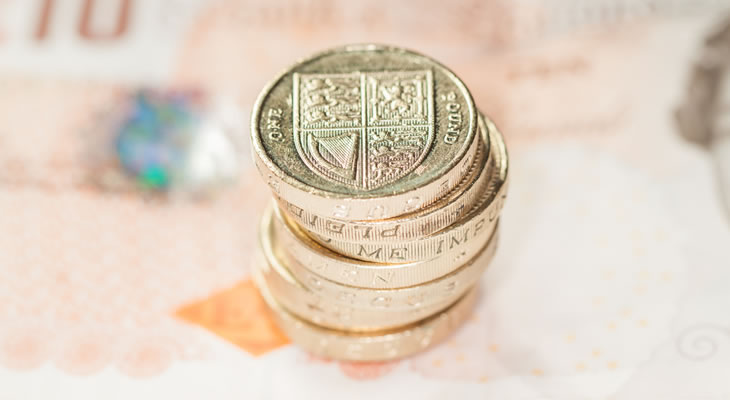Australian Dollar (AUD) Claws Back at Sterling (GBP)
Perhaps indicating the influence of growing risk-sentiment, GBP/AUD has dropped from its day-high of 1.8851 and currently trends in the region of 1.8744.
Though still above the morning’s opening levels, the pair is likely to have begun falling amid firming commodity prices and reduced US rate hike expectations.
The Pound may also have been weighed down amid tax rows in the House of Commons. UK Parliament gathered together to hear Prime Minister David Cameron speak on his ‘Panama Papers’-related allegations.
Chancellor George Osborne and Labour Leader Jeremy Corbyn have also published their tax returns.
Earlier…
- House of Commons Reconvenes – End of UK Parliament’s Easter holiday boosts GBP
- Australian Home Data Prints Positively – But home loans score below predictions
- Oil Price Hopes Bolster Risk-Sentiment – ‘Aussie’ benefits slightly from commodity news
- Forecast: British CPI Due Tuesday – Likely to influence GBP/AUD pair
After a bumpy ride during last week’s session, the GBP/AUD exchange rate attempted a modest recovery as markets reopened after the weekend.
Despite gaining around 150 pips, GBP/AUD remains close to 2016’s lowest levels and currently trends in the region of 1.8810.
GBP/AUD’s current movement is due to a number of factors, including investors profit taking following the Pound’s recent considerable lows amid anticipation of the discussion of some key UK issues.
Sterling (GBP) Stands Firm Despite Battering from Negative Domestic Data
Friday’s Manufacturing Production data weighed on the Pound and prevented it from making extended gains last week.
Year-on-year manufacturing scored -1.8% for February, well below already negative forecasts of -0.7%. Britain’s trade deficit also disappointed analyst predictions.
While Sterling ultimately advanced on the Australian Dollar over the course of last week’s session, the ‘Aussie’ was able to claw back some losses on more optimistic Australian data.
The Pound may be in a better position to begin a rally this week however as the UK Parliament has finally returned from its long Easter recess.
Lasting from the 24th of March until the 11th of April, the Parliament holiday took place over a period where many issues dominated domestic UK headlines. Now that the House of Commons has reconvened, investors and the public hope that these issues will be discussed.
This includes concerns regarding the ‘Panama Papers’ leak and the EU referendum leaflet announced last week. Petitions with over 100k signatures relating to both these developments are expected to be delivered to Parliament.
One calls for UK Prime Minister David Cameron’s resignation following his late father’s involvement with ‘tax havens’. The other asks for the Pro-EU leaflet (which cost £9m in taxpayer money to produce) to be recalled.
Sterling was also boosted by hopes that Britain’s struggling steel industry may find support. Indian steel company Tata Steel announced recently that their UK plants were going on sale, and as the BBC believes some buyers may already be interested, some 10k+ jobs could be saved.
Australian Dollar (AUD) Begins Recovery following Last Week’s Risk-Off Movements
The ‘Aussie’ reeled last week as its bullish run came to an end with the ‘Panama Papers’ scandal moving investors towards less risky ‘safe-haven’ currencies like the US Dollar.
However, hopes within the commodity bloc this week have seen some investors making risk-inspired movement. Oil prices were revealed to have climbed around 6% as markets opened for the week on hopes that an oil production ‘freeze’ will be agreed on at the upcoming OPEC meeting.
While not an Australian commodity, the optimistic news relating to the globe’s most worrying current commodity crisis was enough to slightly bolster AUD sentiment and narrow its losses against the Pound.
The ‘Aussie’ is also holding steady as a result of home lending data released earlier this morning. As Australian housing is a currently an issue for the Australian economy and AUD investors, February’s scores printing positively may have inspired a little confidence in the Australian Dollar.
Investment lending printed at 4.1% from a previous score of -1.6%.
Home loans, on the other hand, printed at 1.5%, up from the low previous score of -3.9%. Unfortunately this particular figure disappointed analyst predictions of 2.0% which may have weighed on the Australian Dollar and allowed GBP/AUD to climb.
Pound Sterling to Australian Dollar (GBP/AUD) Exchange Rate Forecast: UK CPI and Australian Business Confidence Tomorrow
While the pair is likely to float today on domestic and global ecopolitical news, data due for release tomorrow could see some more defined movement in the GBP/AUD pair.
March’s key British CPI score is due for release tomorrow morning and is currently expected to have increased by 0.1% in both its monthly and yearly prints.
However, after last week’s disappointing UK datasets, the vital CPI releasing worse-than-expected is likely to weigh on the Pound considerably, even if February’s ONS house price data proves optimistic.
Tuesday’s Australian data is a little less influential with the most important piece being March’s NAB business confidence score. Credit card purchases and house affordability data is also due during tomorrow’s session.
Any developments in ongoing British issues could also strengthen the Pound, for example if Tata Steel finds a buyer and protects over 10,000 jobs.
The Pound Sterling to Australian Dollar (GBP/AUD) exchange rate currently trends around 1.8810 while the Australian Dollar to Pound Sterling (AUD/GBP) exchange rate trends in the region of 0.5314.



Comments are closed.